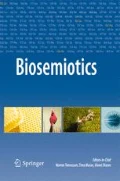Abstract
The concept of truth arises from puzzling over distinctions between the real and the apparent, while the origin of these distinctions lies in the neurobiology of mammalian cerebral lateralization, that is, in the evolution of brains that can address the world both indicatively and subjunctively; brains that represent the world both categorically and hypothetically. After some 2,500 years of thinking about it, the Western philosophical tradition has come up with three major theories of truth: correspondence, coherence, and pragmatist. Traditional philosophy has nevertheless failed to arbitrate much among these views; certainly no clear winner has emerged. I argue, however, that contemporary neuroscience provides adequate theoretical grounds for a unified theory of truth. More specifically, I contend that the correspondence, the coherence, and the pragmatic utility of symbols are each biological features of our neurophysiological information processing systems—that is to say, our brains. On my view, the traditional trifurcation of philosophical accounts of the predicate, “is true”, stems from a trifurcation of focus on the information latent in sensory, motor, and somatosensory cortices of the human brain.




Similar content being viewed by others
Notes
Hacking (1999), 21.
See White (1970), 3.
Wittgenstein (2009), §67.
See Tarski (1994).
Aristotle (1984), 1597.
Moore (1953), 247.
See Kneale and Kneale (1962), 138–158.
Quine (1963), 43.
See Descartes (2008).
Dewey (1920), 155–160.
See Wittgenstein (2009), §23, §97, and §114.
Dennett (1996), 88.
Damasio (1999), 174.
Calvin (1999), 92.
Llinás (2002), 8.
See Hume (2007).
See Schopenhauer (2010).
This view of the nervous system was pioneered and extensively developed by Hannah and Antonio Damasio in the late 1990s; see Damasio, A. (1999).
Llinás (2002), 94.
Spinoza (1985), 457.
References
Aristotle. (1984). In J. Barnes (Ed.), Complete works of Aristotle (Vol. 2). Princeton: Princeton University Press.
Calvin, W. (1999). The cerebral code: Thinking a thought in the mosaics of the mind. New York: Bradford Books.
Damasio, A. (1999). Descartes’ error: Emotion, reason and the human brain. New York: Harper & Row.
Dennett, D. (1996). Kinds of minds. New York: Persus Press.
Descartes, R. (2008). In M. Moriarty (Ed.), Meditations on first philosophy: With selections from the objections and replies. Oxford: Oxford University Press.
Dewey, J. (1920). Reconstruction in philosophy. New York: Doubleday.
Hacking, I. (1999). The social construction of what? Cambridge: Harvard University Press.
Hume, D. (2007). An enquiry concerning human understanding. Cambridge: Cambridge University Press.
Kneale, W., & Kneale, M. (1962). The development of logic. Oxford: Clarendon.
Llinás, R. R. (2002). I of the vortex: From neurons to self. Cambridge: MIT Press.
Moore, G. E. (1953). Some main problems of philosophy. London: George Allen & Unwin.
Quine, W. V. O. (1963). From a logical point of view (2nd ed.). New York: Harper & Row.
Schopenhauer, A. (2010). The world as will and representation. Cambridge: Cambridge University Press.
Spinoza, B. (1985). The collected works of Spinoza, vol. I (trans: Curley E. M.).. Princeton, NJ: Princeton University Press.
Tarski, A. (1994). Introduction to logic and to the methodology of the deductive sciences. New York: Oxford University Press.
White, A. R. (1970). Truth. New York: Anchor.
Wittgenstein, L. (2009). Philosophical investigations (trans: Anscombe, G. E. M. et al.). 4th ed. West Sussex, UK: Wiley-Blackwell.
Author information
Authors and Affiliations
Corresponding author
Rights and permissions
About this article
Cite this article
Bombardi, R. On the Neurobiology of Truth. Biosemiotics 6, 537–546 (2013). https://doi.org/10.1007/s12304-013-9183-7
Received:
Accepted:
Published:
Issue Date:
DOI: https://doi.org/10.1007/s12304-013-9183-7



